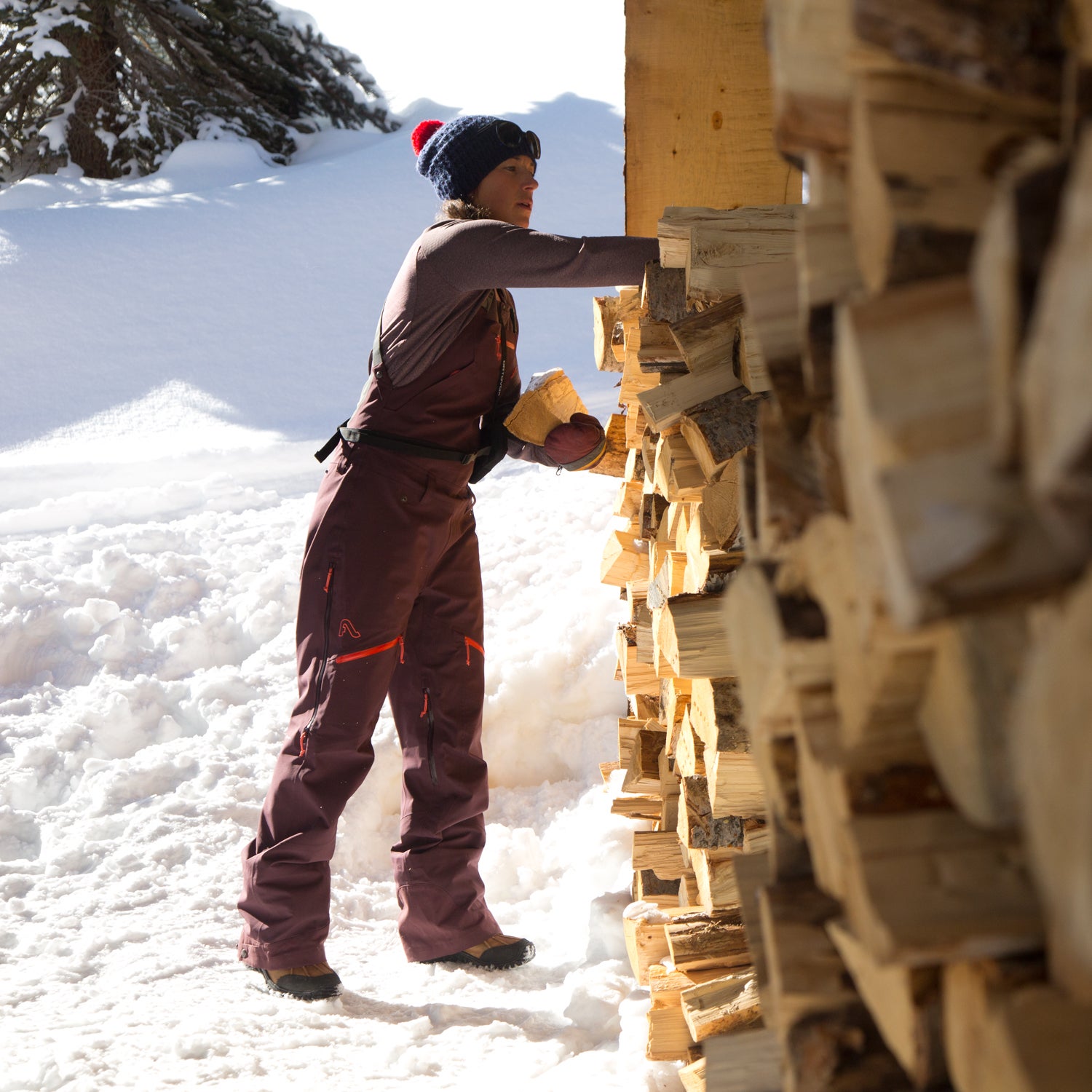“Under boob or over boob?” That was the question co-founder Dan Abrams posted to Facebook in a fit of design frustration. The company’s designers had been working on a women’s ski bib for nearly three years. They were about to make samples and still weren’t sure what to do about the actual bib.
So Abrams turned to the Internet. “It was the first time we used the community to give us data, and it was amazing how many women spoke up,” he says. “They knew exactly what we were talking about. Overwhelmingly, they said, ‘If you’re going to do a bib, give us one that covers our chest.’”
Flylow had been procrastinating on making a women’s bib because it was worried about getting it wrong. The men’s version, the Baker, designed with help from the Mount Baker Ski Patrol, was one of the company’s bestselling pieces of gear. But women’s bodies generally vary in more directions, and women tend to be more particular about fit because of that. This made Flylow wary about committing to a women’s style.
“Now the women’s stuff is growing faster than the men’s stuff.”
Abrams says they wanted to have equivalent men’s and women’s gear in the line but weren’t sure many people would buy the women’s bibs. The women they knew, like Abram’s wife, former telemark freeskiing world champion and ���ϳԹ��� contributor , wanted bibs, but they weren’t sure if the niche was too small. Flylow went to retailers to see if women were actually buying bibs and received mixed answers. Some places said the audience was too small, while others said that really nice versions sold well. Abrams says they realized Flylow had to do something pretty specific, so they committed to doing a high-end technical version.
Then the designers started to work through the fit factors: hips, breasts, backcountry bathroom breaks. “A size medium pant is going to have to fit a whole height range and a whole hip range, but with bibs, now we have to work with height, hips, and boobs. This is effing complicated,” Abrams says. They cut the men’s bibs basically straight up and down, but for the women’s version, they had to account for waists and a wide range of midriffs, even within the same size range. They spent a lot of time figuring out waist taper and built a stretchy panel into the back to give it more flexibility. “It doesn’t change the aesthetic, but it changes the fit,” he says.
Beyond fit, the designers had to figure out functionality. “We didn’t even solicit this, but when we asked for beta, people were like, ‘Bibs are tough because they’re hard to pee in,’” Abrams says. They rejected the mountaineering-style drop seat—they didn’t think it interfaced well with long underwear—and finally settled on a side zip that creates a hole Abrams says is big enough to fit your butt through.
Then Flylow took beta testing beyond Facebook and into the woods. Athlete , the company’s fit model, helped them figure out how long the zipper had to be and where it should be placed. It took a lot of bathroom stops. “She texted us from a photo shoot: ‘I’m peeing in the bibs right now, and it works!’” Abrams says. “That’s why we took an extra two years—we wanted to make something universal.”
And here’s the thing: after years of futzing with hip stretch and pee-ability, it worked. The final result, the , became the biggest thing Flylow put out this season. Turns out that making a tightly designed technical piece for women pays off. “We are blowing the roof off the bib world right now,” Abrams says. “We’ve never launched a product and had it go to the top of our direct sales before.”
He says they were worried that women wouldn’t buy a burly, expensive, backcountry-focused pair of bibs. It’s scary for a small company to branch out into highly specific pieces of gear. In the past, Flylow limited the number of women’s products because it was unsure about the marketability. “We started out making simple products, and we just called them unisex because we could only make so many things,” Abrams says. “Then the women’s line chased the men’s line to get new styles. But now the women’s stuff is growing faster than the men’s stuff. It’s almost equal in numbers of products sold.”


